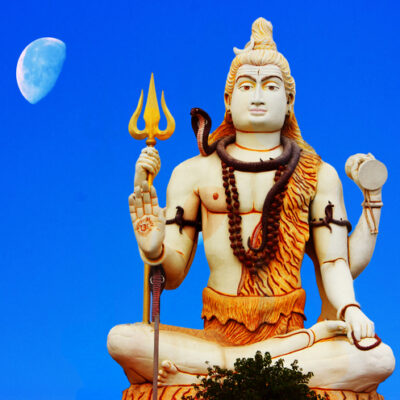Mandhata Siddhanath Temple, Madhya Pradesh

Address
Mandhata Siddhanath Temple, Madhya Pradesh
Mandhata, Punasa Tehsil,
Khandwa District,
Madhya Pradesh 451115
Moolavar
Siddhanath (Lord Shiva)
Introduction
The Siddhanath Temple, dedicated to Lord Shiva, is an ancient and historically significant religious site located on Mandhata Island near Omkareshwar in the Khandwa District of Madhya Pradesh, India.
Location: The Siddhanath Temple is situated on Mandhata Island in the Narmada River, near Omkareshwar. Omkareshwar is one of the sacred islands in the Narmada River and is associated with Lord Shiva. The temple is located at the end of the Parikrama (circumambulation) route of Omkareshwar, making it an integral part of the pilgrimage journey for devotees.
Deity: The temple is dedicated to Lord Shiva, one of the principal deities in Hinduism, revered as the god of destruction and transformation. It holds immense religious significance for Shiva devotees.
Archaeological Significance: The Siddhanath Temple has been recognized as a Monument of National Importance by the Archaeological Survey of India (ASI). This recognition highlights its historical and architectural value.
Historical Age: The temple is believed to be approximately 1000 years old, signifying its ancient origins. It is an important religious site with a rich history.
Temple Structure: Despite its current ruined state, the Siddhanath Temple retains architectural and historical importance. Its layout consists of a sanctum (garbha griha) with doorways on all four sides and a mandapa (hall) that surrounds the sanctum. The raised platform on which the temple stands is a common feature in temple architecture.
Intricately Carved Pillars: The mandapa of the temple is adorned with 76 intricately carved pillars. Pillar carvings in Hindu temple architecture typically depict various deities, mythological scenes, and ornamental motifs. These pillars add to the temple’s artistic and architectural charm.
Shikaras: The original temple is believed to have had five shikaras, which are towering spires or pyramidal structures. Four of these shikaras would have likely been positioned over the mandapa, while the fifth would have crowned the sanctum. Shikaras are a distinctive feature of North Indian temple architecture, and their presence signifies the temple’s architectural grandeur.
Elephant Figures: The sides of the platform on which the temple stands are adorned with elephant figures. Elephants are commonly used motifs in Indian temple architecture and are often associated with strength, wisdom, and auspiciousness.
Despite the temple’s current state of disrepair, its historical and architectural significance continues to attract visitors and devotees interested in exploring India’s rich religious heritage and ancient temple structures.
Century/Period
1000 years old
Managed By
Archaeological Survey of India (ASI).
Nearest Bus Station
Omkareshwar
Nearest Railway Station
Sanawad Station
Nearest Airport
Indore







